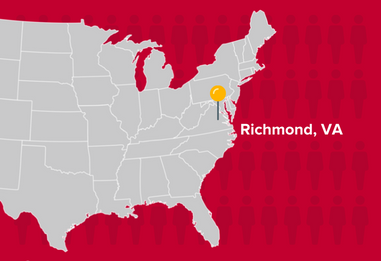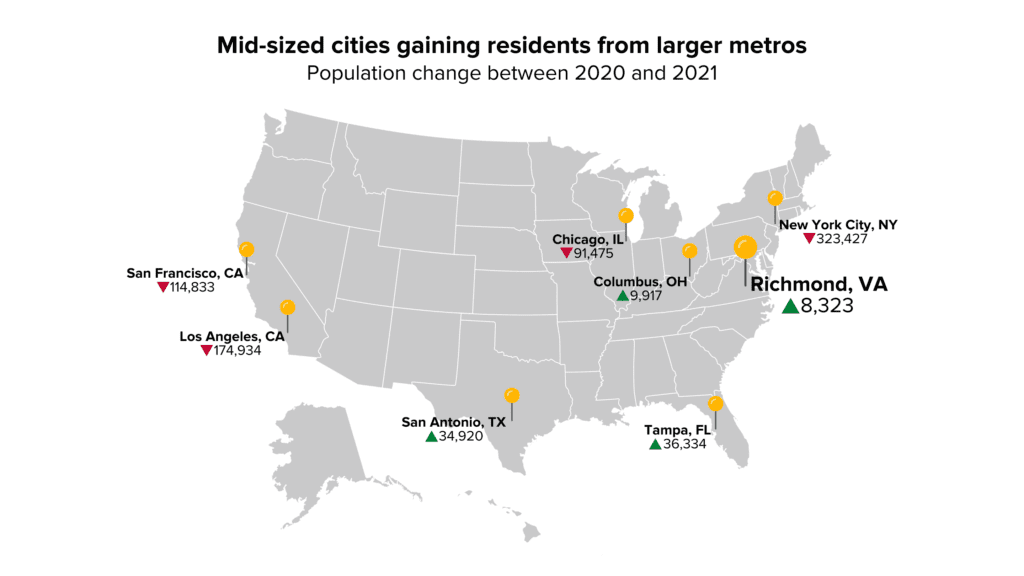
News
Blog | 3 min read
April 29, 2022

Population trends are shifting across the nation as more individuals leave big cities for mid-sized, more affordable locations. According to recent data from CoStar, the Richmond MSA is the 16th fastest growing Metropolitan Statistical Area among MSAs with more than one million residents. The data points to an increase in both domestic and international migration to the Richmond MSA, meaning Richmond is attracting new members to the local workforce both near and far.
Immigration and in-migration are affecting population variations throughout the nation as residents search for better economic opportunities. Between 2020 and 2021, the U.S. population increased by 393,000 people, or 0.1 percent, to a total of 331.9 million people.
The nation’s population growth was driven by international migration at 62 percent, while natural increase (births minus deaths) accounted for 38 percent of the nation’s growth.
The nation’s largest metro areas witnessed a decrease in population driven by residents moving in search of less congestion and more affordability. The nation’s largest metropolitan statistical areas — 56 MSAs with 1 million or more people in 2021 — lost 2 percent of its population, or 295,000 people, between 2020 and 2021. While there were gains through natural increase and immigration, there was a net loss of nearly 780,000 people from the largest MSAs.
For example, New York, Los Angeles and San Francisco (three of the largest and exceptionally expensive metro areas) had a combined population loss of over 613,000 people during the year which was offset by gains in other metro areas.
According to data from CoStar, Richmond still ranks as one of the fastest growing markets nationally despite the slowing of population gains in metropolitan areas. The Richmond MSA added 8,323 net new residents, or a slight 0.6 percent increase between 2020 – 2021. Among the 56 MSAs with 1 million or more residents, Richmond’s increase ranked the 16th highest annual growth rate across the nation. Population changes for MSAs including Richmond are shown in the map below.

Greater Richmond was named 12th in the nation for growth due to immigration, 16 percent of net new population and 27th for growth from in-migration, representing 82 percent of the net new population.
Two localities in Greater Richmond each saw some population change with Chesterfield having the largest population increase at 1.7 percent. Chesterfield is continuously ranked among the largest population increases throughout all 133 jurisdictions in Virginia. Hanover’s population also increased by 1.36 percent.
At this moderate pace of population increase, Greater Richmond organizations can ensure the area is sustainable to its population. This steady population growth does not pose a heavy strain on local infrastructure while proving Greater Richmond is a desirable destination.
For example, industrial activity has increased with the influx business operations. In addition to several new industrial sites, Greater Richmond is seeing new apartment complexes and housing which, despite increasing costs around the nation, remain more affordable than several competing metros.
Greater Richmond’s affordable cost of living compared to other markets, its business-friendly operating environment and the number of accolades the region receives has helped attract new residents. In fact, the region has long been known as a great place to call home: